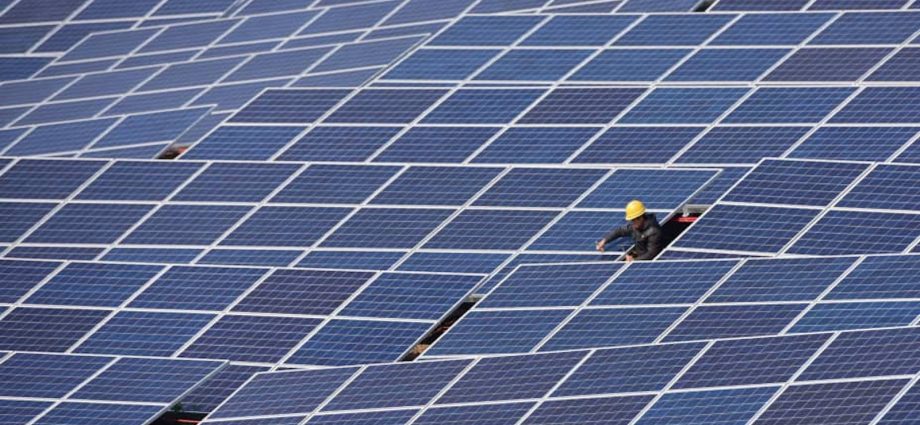In 2021, Australian company Star Scientific signed an agreement with the Philippine government to develop green hydrogen as a fuel source. This agreement joins a long list of similar agreements around the world.
But the number of large-scale hydrogen projects that have progressed from agreements into development is rather short. Vastly more investment is pouring into solar and wind energy than hydrogen. Why is there such a disparity between hydrogen talk and hydrogen action?
Fossil fuels cause three-quarters of global greenhouse gas emissions. Most countries have committed to deep reductions or the elimination of greenhouse emissions by the middle of the 21st century. This necessarily requires the elimination of fossil fuels from the global economy.
Solar and wind generators comprise three-quarters of global electricity generation capacity additions — and 99% in Australia. New coal, gas, nuclear and hydroelectric capacity additions comprise the remaining quarter. This is compelling market-based evidence that solar and wind power are cheaper than fossil fuel generation.
The market is speaking clearly — solar and wind have won the energy race and will do the heavy lifting to drive fossil fuels out of the global economy. The fastest energy change in history is underway.
The speed of the solar and wind revolution is illustrated by pathfinder countries. In Australia’s National Electricity Market, solar and wind production rose from near zero in 2008 to 9% in 2017 and 26% in 2022. The government target for 2030 is 75% solar and wind electricity, plus 7% from existing hydroelectricity and 18% from coal and gas combined.
Australia is generating about twice as much solar energy per person compared with any other country. The other leading countries are Japan, the Netherlands, Germany, Spain and Chile. The rapid uptake of solar and wind is propelled by their compelling economic advantage over fossil fuels.

About three-quarters of global greenhouse gas emissions can be eliminated through the generation of zero-emission electricity from solar and wind, coupled with the electrification of vehicles and heating.
Batteries and pumped hydro energy storage are the solution to large-scale electrical energy storage. Pumped hydropower technology comprises about 95% of global energy storage because it is affordable. The world has 100 times more off-river pumped hydropower storage potential than it needs in order to support 100% renewable energy.
Australia is leading the way with energy storage because Australia generates more variable solar and wind energy per capita than other countries and cannot share electricity across land borders.
Clean hydrogen can be produced via electrolysis of water driven by solar and wind. Hydrogen could do a lot of things in the energy sector, but it is rarely the best tool. Direct use of electricity derived from solar and wind is usually much better. There is currently negligible clean hydrogen production anywhere.
Electric technologies have a far larger market share than hydrogen-powered equivalents because they are cheaper. In 2021, electric vehicles outsold hydrogen-powered vehicles in a ratio of 400 to 1. Electrification of heating is well underway, whereas the implementation of clean hydrogen for heating is negligible.
There are large energy losses in a hydrogen cycle. Solar and wind can be used to produce hydrogen, which then needs to be compressed, shipped, stored and then converted back to electricity or motive power.
About three-quarters of the energy is lost during this process. This triples the cost of producing clean energy using hydrogen. Prospects for large-scale hydrogen energy use are largely illusory.
Though hydrogen will not be widely used in the energy industry, hydrogen atoms are required in large quantity in the chemical industry for the clean production of ammonia, plastics, synthetic jet fuel and metals.
Currently, most hydrogen atoms for chemicals are derived from fossil gas (methane) with associated carbon dioxide emissions. The chemical industry will be the main market for clean hydrogen.
Claims have been made that massive new industries will be built around the export of hydrogen compounds from Australia and other countries. However, solar and wind resources are far more widely available than fossil fuels.
Most countries can generate far more wind and solar energy than they need, even densely populated countries like Japan and Indonesia.
Australia is far ahead of East and Southeast Asian countries in terms of per capita solar and wind deployment. Australia has about 80 times more solar and wind capacity per capita than the Philippines and three times more than China.

Australia is tracking more quickly than other countries towards a low-cost, environmentally sustainable and reliable energy system built around solar and wind. Such an energy system also confers resilience in the face of war, trade disruption or pandemics. Australia has an important role as a global pathfinder.
Solar and wind energy are the main components of the future decarbonized global energy economy, in conjunction with the electrification of most energy functions. Most countries can produce all the energy they need from solar and wind and make their own clean hydrogen for their chemical industry.
Largescale international trade in hydrogen, on a comparable scale to current fossil fuel trade, is quite unlikely.
Andrew Blakers is Emeritus Professor of Engineering at the Australian National University.
This article, republished with permission, was first published by East Asia Forum, which is based out of the Crawford School of Public Policy within the College of Asia and the Pacific at the Australian National University.

